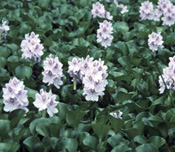FWS Invasive Programs
Welcome to the FWS Invasive Programs page of the USFWS Invasive Species Web Portal. This section discusses the Service’s invasive species activities organized by program. It is intended for those who understand the organization of the Service and are looking for invasive species information related to a specific program such as Refuges, the Partners for Fish and Wildlife program or the ANS Program. Although there may be some duplication of information between this subsection and the Invasive Species Activities subsection, it is important to organize the information by both subject and program so that the information can be found quickly by both the public and FWS and other government staff.
For more information...
- The Aquatic Nuisance Species (ANS) Program, part of the Service’s Fisheries Program office in Washington D.C., leads the Service’s Aquatic Nuisance Species (ANS) Program. The Branch’s Invasive Species web site has links to information on its ANS Program, the ANS Task Force, the Stop Aquatic Hitchhikers and Habitattitude public awareness campaigns, and the 100th Meridian Initiative.
- The Branch of Invasive Species also conducts activities related to the listing of organisms as Injurious Wildlife.
- The Service’s National Wildlife Refuge System addresses invasive species issues on its 545 Refuges, encompassing approximately 96 million acres of wildlife habitat.
- Several Service programs are involved in the Habitat Restoration of degraded wildlife habitats included those impacted by invasive species.
- The Endangered Species Program is involved in the recovery of listed (threatened and endangered) species and the ecosystems on which they depend. Invasive species are often part of the reason these species are threatened.
- The Division of Environmental Quality addresses invasive species issues through its work on Integrated Pest Management, its work to promote the use of native plants as part of its efforts to protect Pollinators, and its work on biocontrol.
- The Service’s Office of Law Enforcement, using wildlife inspectors at 32 major U.S. airports, ocean ports, and border crossings, seeks to prevent the introduction of injurious wildlife through its wildlife inspection program.
